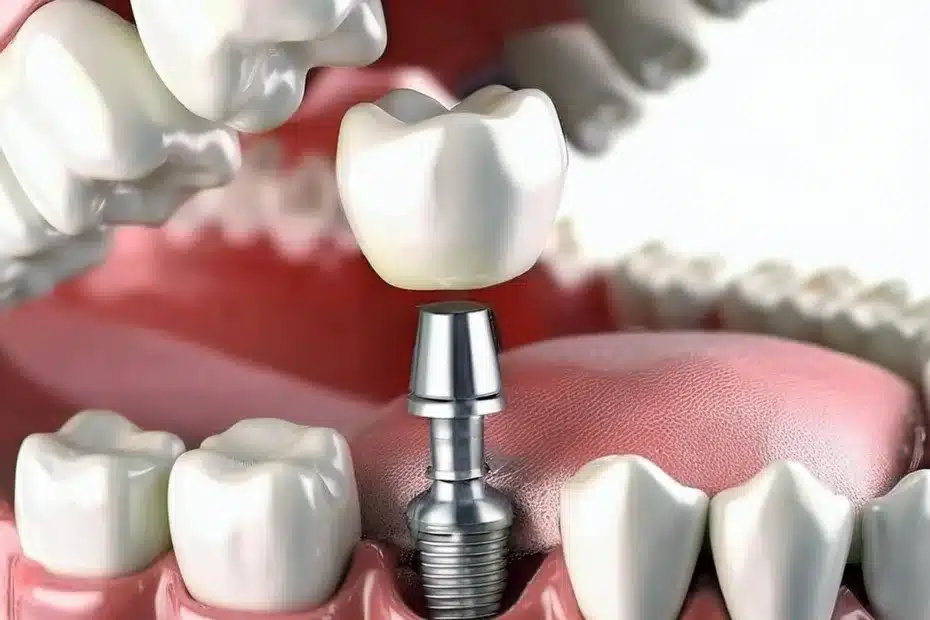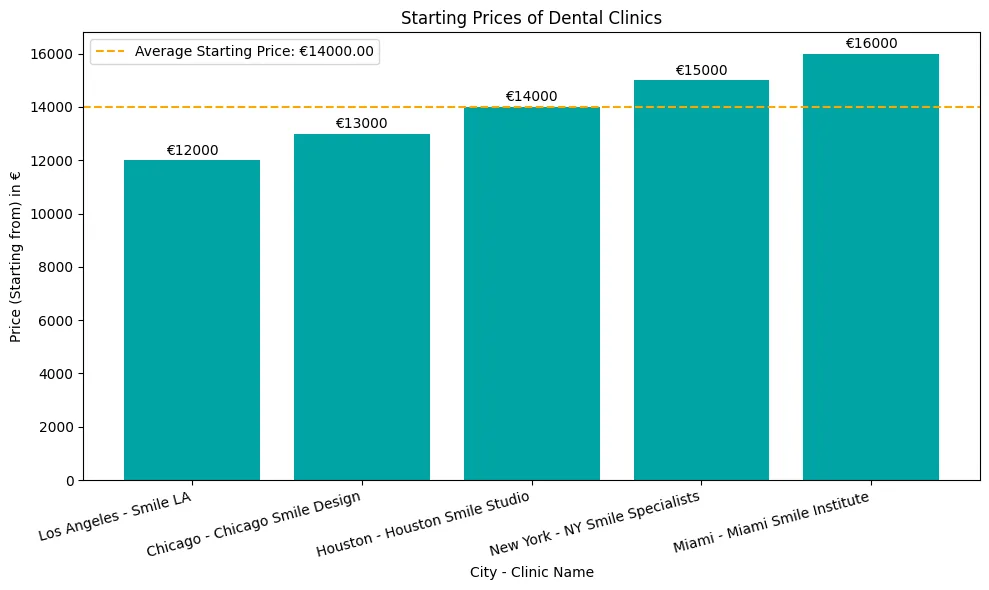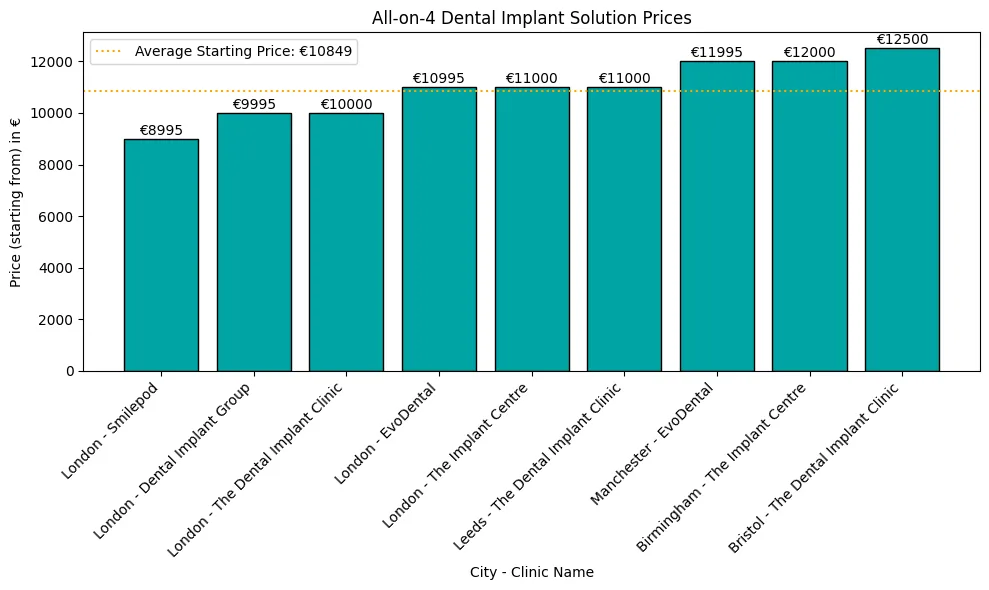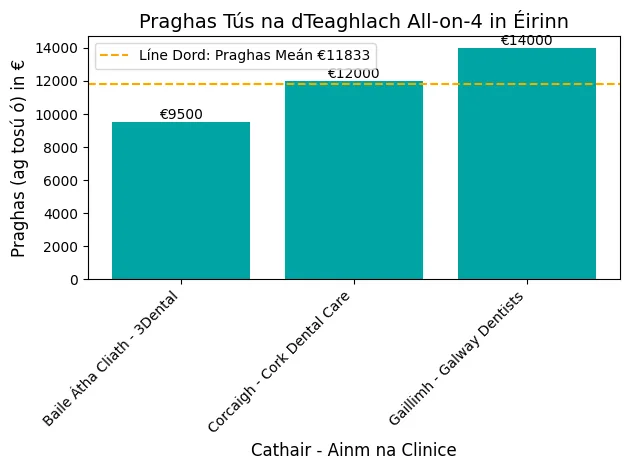Titanium implantet dentare janë bërë një zgjedhje popullore për dhëmbët që mungojnë, por shumë njerëz ende kanë shqetësime në lidhje me sigurinë, qëndrueshmërinë dhe koston.
Nëse jeni duke marrë në konsideratë implantet e titanit, me siguri po pyesni veten nga çfarë janë bërë, sa kohë zgjasin dhe nëse ia vlen investimi.
Cilat janë të mirat dhe të këqijat e implanteve të titanit?
Titanium materiali i implanteve dentare janë një zgjedhje popullore për dhëmbët që mungojnë, me një shkallë suksesi 92.5% pas 8 vitesh. Të prodhuara nga titan biokompatibël, ato janë të qëndrueshme dhe rezistente ndaj korrozionit me një rrezik të ulët të reaksioneve alergjike. Mesatarisht, një implant dentar me titan kushton midis 500 dhe 2,000 € për implant, në varësi të kompleksitetit të procedurës.

Nga se përbëhen implantet e titanit?
Një implant titani është bërë nga një aliazh metalik biokompatibël që është i fortë, i qëndrueshëm dhe rezistent ndaj korrozionit (1).
Lidhja e titanit e përdorur në implante është zakonisht titan 90%, alumini 6% dhe vanadium 4% (2).
Kjo aliazh është zgjedhur për raportin e lartë të forcës ndaj peshës, rezistencës ndaj korrozionit dhe aftësisë për t'i bërë ballë stresit të përtypjes dhe kafshimit.
Biokompatibiliteti i implanteve të titanit
Biokompatibiliteti i implanteve dentare me titan është një nga avantazhet e tyre më të mëdha.
Titani është një metal jo toksik që tolerohet mirë nga trupi dhe është treguar se promovon rritjen dhe integrimin e kockave (3).
Sipërfaqja e implantit dentar me titan trajtohet gjithashtu për të rritur biokompatibilitetin e tij dhe për të nxitur osseointegrimin, procesi me të cilin implanti bashkohet me kockën përreth.

Rezistenca ndaj korrozionit të implanteve të titanit
Titanium materialet e implanteve dentare janë gjithashtu rezistente ndaj korrozionit, gjë që është jetike për suksesin e tyre afatgjatë.
Lidhja e titanit e përdorur në implante është rezistente ndaj korrozionit ndaj pështymës, ushqimit dhe substancave të tjera që mund të dëmtojnë implantin (4).
Kjo rezistencë ndaj korrozionit siguron që implanti të mbetet i fortë dhe i qëndrueshëm me kalimin e kohës dhe zvogëlon rrezikun e dështimit të implantit.
| Periudha kohore | Norma e suksesit | Referenca |
|---|---|---|
| 5 vjet | 92.5% | Referenca 5 |
| 8 vjet | 92.5% | Referenca 5 |
| 10 vjet | 90% | Referenca 3 |
| 15 vjet | 90% | Referenca 3 |
Përparësitë e implanteve të titanit
Implantet dentare me titan kanë disa përparësi që i bëjnë ato një zgjedhje popullore për dhëmbët që mungojnë. Disa nga përfitimet janë:
Shkalla e lartë e suksesit
Implantet dentare me titan kanë një shkallë të lartë suksesi, me një normë kumulative mbijetese prej 92.5% pas 8 vitesh (5).
Kjo është për shkak të biokompatibilitetit të titanit, i cili e lejon atë të integrohet mirë me kockën dhe indin përreth.
Biokompatibiliteti
Titani është një metal biokompatibël që tolerohet mirë nga trupi (2).
Kjo do të thotë se ka më pak gjasa të shkaktojë reaksione alergjike ose efekte të tjera negative dhe është një zgjedhje e sigurt për implantet.
Qëndrueshmëria
Implantet dentare me titan janë gjithashtu të qëndrueshme dhe mund të zgjasin për shumë vite me kujdesin e duhur (4).
Një studim zbuloi se implantet e titanit kishin një shkallë mbijetese prej 90% pas 15 vjetësh (3).

Disavantazhet e implanteve me titan
Ndërsa implantet dentare me titan kanë shumë përparësi, ato gjithashtu kanë disa disavantazhe.
Disa nga anët negative të implanteve dentare me titan janë:
Reaksionet alergjike
Disa njerëz mund të jenë alergjikë ndaj titanit, i cili mund të shkaktojë një reaksion alergjik kur vendoset implanti (6).
Kjo mund të shkaktojë simptoma të tilla si urtikarie, ekzemë, edemë dhe inflamacion të fytyrës (7).
Në raste të rënda, reaksioni alergjik mund të shkaktojë dështimin e implantit.
Estetike
Implantet dentare me titan mund të jenë të dukshme nën indin e mishrave të dhëmbëve, gjë që mund të ndikojë në buzëqeshjen (6).
Kjo mund të jetë një shqetësim për ata që janë të vetëdijshëm për pamjen e tyre.
Kostoja
Implantet dentare me titan mund të jenë të shtrenjta, me çmime që variojnë nga 500 € në 2,000 € për implant (1).
Kjo mund të jetë një barrë e madhe financiare për disa.
| Vendi | Kostoja |
|---|---|
| Shtetet e Bashkuara | €1,000 – €2,000 |
| Mbretëria e Bashkuar | €800 – €1,500 |
| Shqipëria | €500 – €1,000 |
Krahasuar me Materialet e tjera
Kur bëhet fjalë për zgjedhjen e një materiali për implantet, titani nuk është i vetmi opsion.
Materiale të tjera, të tilla si qeramika dhe zirkonia, janë gjithashtu të disponueshme.
Titanium vs Implantet Dentare Qeramike
Implantet qeramike janë bërë nga një lloj materiali qeramik që imiton dhëmbin natyral.
Ndërsa implantet qeramike kanë një pamje më natyrale, ato nuk janë aq të forta sa implantet e titanit (6).
Në fakt, një studim zbuloi se implantet qeramike kishin një shkallë më të ulët mbijetese se implantet e titanit, me një normë mbijetese 5-vjeçare prej 73.2% krahasuar me 92.5% për implantet e titanit (5).

Implantet dentare Titanium vs Zirkoni
Implantet zirkonia janë bërë nga një lloj materiali qeramik që njihet për forcën dhe qëndrueshmërinë e tij.
Ndërsa implantet e zirkonisë janë më të forta se implantet qeramike, ato ende nuk janë aq të forta sa implantet e titanit (4).
Në fakt, një studim zbuloi se implantet e zirkonisë kishin një shkallë mbijetese 5-vjeçare prej 85.7%, e cila është më e ulët se 92.5% për implantet e titanit (5).
Titani kundër metaleve të tjera
Titani nuk është i vetmi metal që përdoret në implante.
Përdoren gjithashtu metale të tjera si vanadium, alumin, kobalt, krom dhe molibden (1).
Por implanti dentar i titanit është metali më i përdorur për shkak të biokompatibilitetit, forcës dhe rezistencës ndaj korrozionit.

Përfundime dhe pika kryesore:
Çelës-Takeaways
Implantet dentare me titan kanë një shkallë suksesi 92,51 TP3T pas 8 vitesh (5).
Një implant dentar me titan është biokompatibël, zvogëlon rrezikun e reaksioneve alergjike dhe promovon osseointegrimin (2).
Implantet dentare me titan janë të qëndrueshme dhe një zgjidhje afatgjatë për dhëmbët që mungojnë (4).
konkluzioni:
Implantet dentare me titan janë një zgjedhje popullore për dhëmbët që mungojnë për shkak të shkallës së lartë të suksesit, biokompatibilitetit dhe qëndrueshmërisë.
Ndërsa ato kanë disa anë negative, si reaksionet alergjike dhe shqetësimet estetike, ato janë një opsion i mundshëm për shumë njerëz.

FAQ
Referencat
(1) Esposito M, et al. Ndërhyrjet për zëvendësimin e dhëmbëve që mungojnë: lloje të ndryshme të implanteve dentare. Cochrane Database Syst Rev. 2014;(7):CD003815.
Neni: Ndërhyrjet për zëvendësimin e dhëmbëve që mungojnë: lloje të ndryshme të implanteve dentare
(2) Albrektsson T, et al. Fikse titani të integruara të osteokondrozës në trajtimin e dhëmbëve. Biomaterialet. 1983; 4 (1): 25-28.
Neni: Fikse titani të integruara të osteokondrozës në trajtimin e dhëmbëve
(3) Adell R, et al. Një studim 15-vjeçar i implanteve osseointegruese në trajtimin e nofullës pa dhëmbë. Int J Oral Surg. 1981; 10 (6): 387-416.
Neni: Një studim 15-vjeçar i implanteve osseointegruese në trajtimin e nofullës pa dhëmbë
(4) Esposito M, et al. Implantet dentare: një përmbledhje. J Clin Periodontol. 2016; 43 (3): 267-278.
Neni: Implantet dentare: një përmbledhje
(5) Buser D, et al. Vlerësimi afatgjatë i implanteve ITI jo të zhytura. Pjesa 1: Analiza e tabelës së jetës 8-vjeçare të një studimi të mundshëm shumëqendror me 2359 implante. Clin Oral Implants Res. 1997; 8 (3): 161-172.
(6) Lindhe J, et al. Efekti i dizajnit të implantit në shërimin e indeve peri-implantare. J Clin Periodontol. 2017; 44 (3): 257-265.
Neni: Efekti i dizajnit të implantit në shërimin e indeve peri-implantare
(7) Donos N, et al., Roli i implanteve dentare në menaxhimin e pacientëve periodontal. Periodontol 2000. 2017;73(1):133-144.
Neni: Roli i implanteve dentare në menaxhimin e pacientëve periodontal




